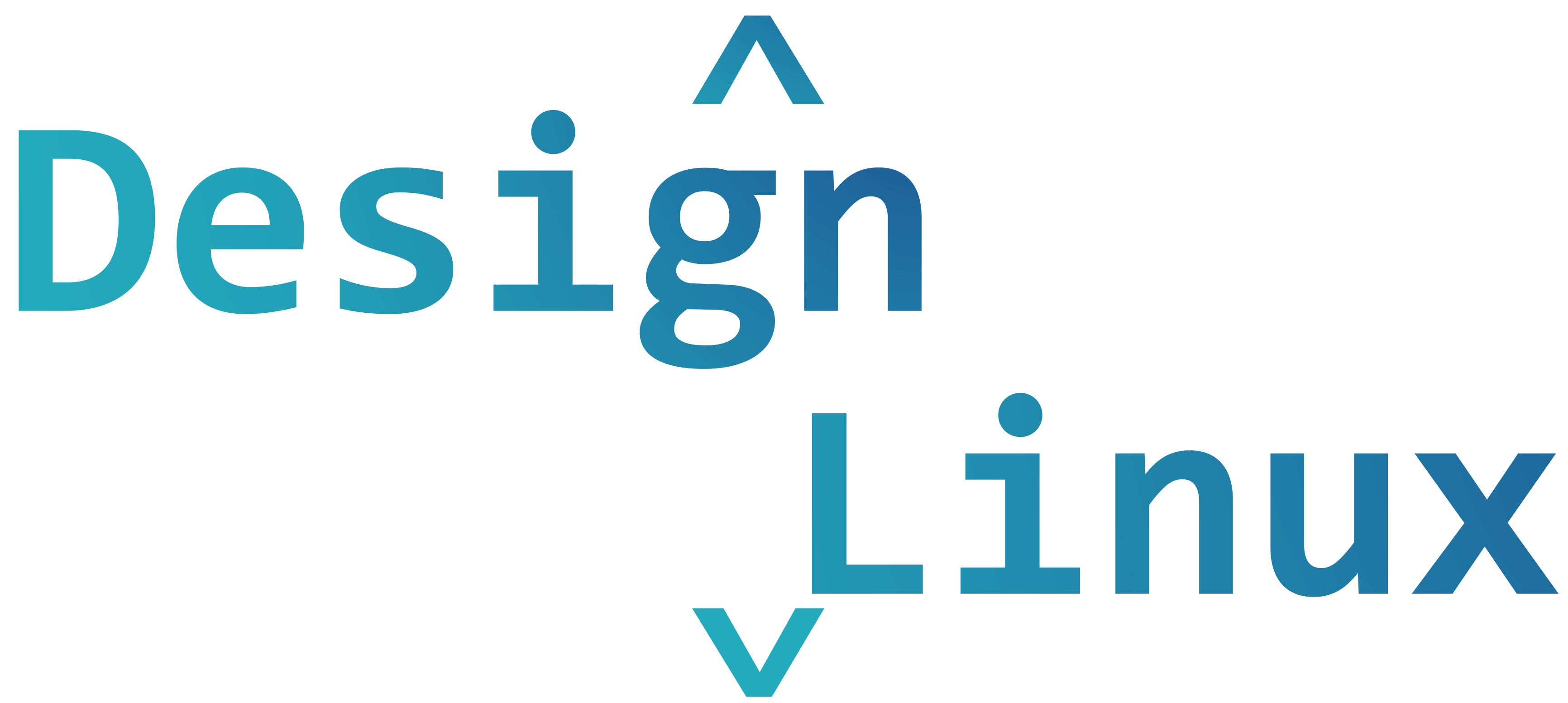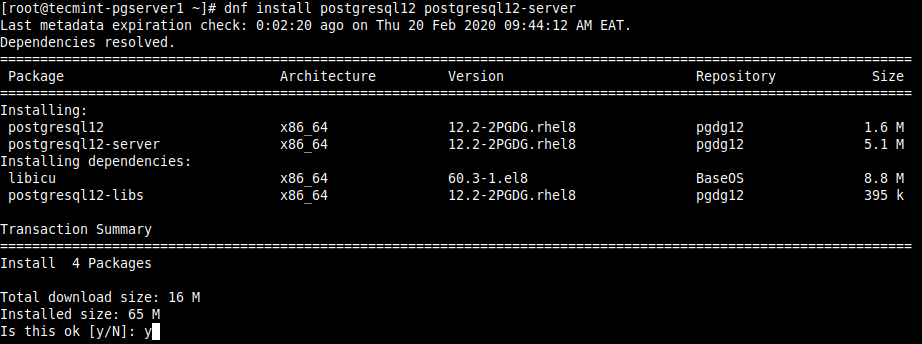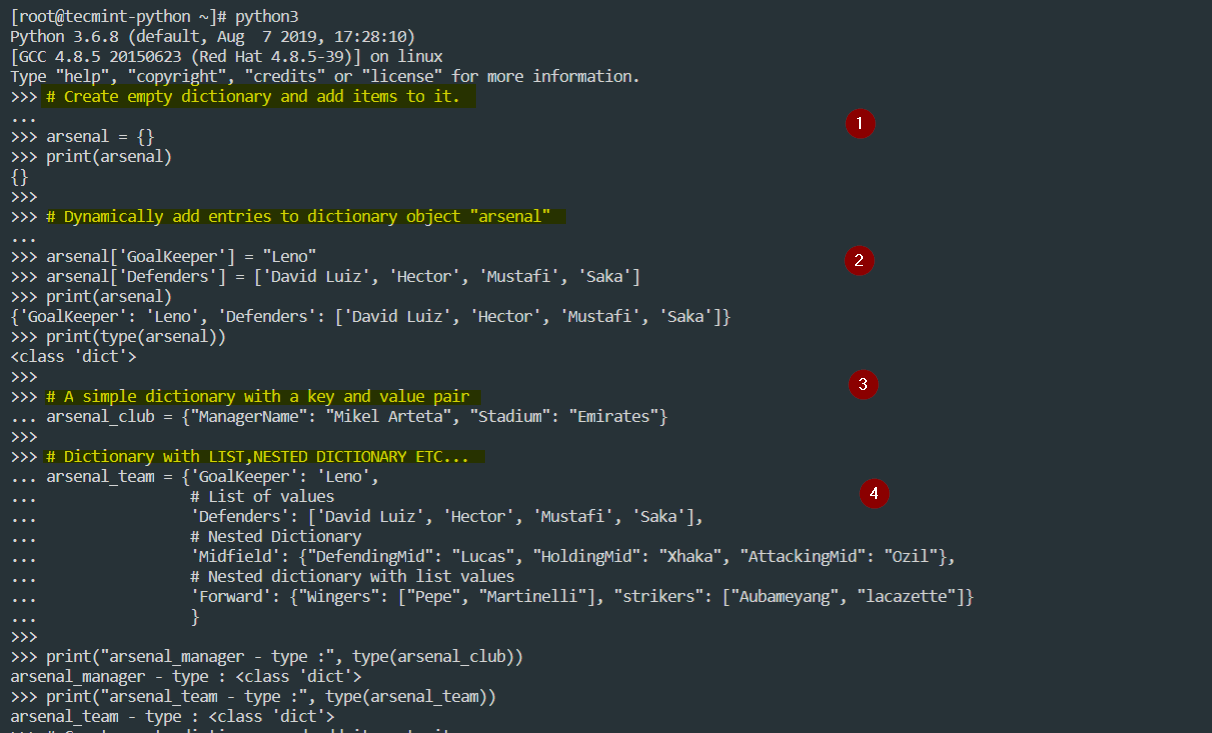In this Part 2 of Python Data Structure series, we will be discussing what is a tuple, how it differs from other data structure in python, how to create, delete tuple objects and methods of tuple objects and how tuple differs from the list. Python tuples are similar to list data structure but the main
Make Linux Great Again
How to Install LEMP Server on CentOS 8
LEMP is a software stack that comprises a set of free and open-source tools that are used for powering high traffic, and dynamic websites. LEMP is an acronym for Linux, Nginx (pronounced as Engine X), MariaDB / MySQL and PHP. Nginx is an open-source, robust and high-performance web server that can also double up as
How to Install PostgreSQL and pgAdmin in CentOS 8
PostgreSQL is a powerful, widely-used, open-source, multi-platform and advanced object-relational database system known for its proven architecture, reliability, data integrity, robust feature set, and extensibility. pgAdmin is an advanced, open-source, full-featured, and web-based administration and management tool for the PostgreSQL database server. In this article, you will learn how to install the PostgreSQL 12 database
Learn Python Dictionary Data Structure – Part 3
In this Part 3 of Python Data Structure series, we will be discussing what is a dictionary, how it differs from other data structure in python, how to create, delete dictionary objects and methods of dictionary objects. Dictionary is a built-in implementation of “Python Data Structure” which is a collection of “Key: Value” pairs. Dictionary
PyIDM – An Open Source Alternative to IDM (Internet Download Manager)
pyIDM is a free, open-source alternative to IDM (Internet Download Manager), used to download general files and videos from youtube as well as other streaming websites. It is developed using Python (requires Python 3.6+) and relies only on open source tools and libraries such as pycurl, youtube_dl, FFmpeg, and pysimplegui. Recommended Read: 10 Most Popular
WireGuard – A Fast, Modern and Secure VPN Tunnel for Linux
WireGuard is a modern, secure, cross-platform and general-purpose VPN implementation that uses state-of-the-art cryptography. It aims to be speedy, simpler, leaner and more functional than IPsec and it intends to be more performant than OpenVPN. It is designed for use in various circumstances and can be deployed on embedded interfaces, fully loaded backbone routers, and
How to Append Text to End of File in Linux
While working with configuration files in Linux, sometimes you need to append text such as configuration parameters to an existing file. To append simply means to add text to the end or bottom of a file. In this short article, you will learn different ways to append text to the end of a file in
How to Install OwnCloud on CentOS 8
Owncloud is a market-leading, client-server software that offers a cloud platform that allows you to back-up your files in a central location and syncs them on the cloud. It’s an excellent alternative to popular backup applications such as OneDrive, Dropbox and Google Drive. Unlike these popular platforms, OwnCloud doesn’t offer data center capabilities for hosting
Learn Python Set/Frozenset Data Structure – Part 4
In this Part 4 of Python Data Structure series, we will be discussing what is a set, how it differs from other data structure in python, how to create set objects, delete set objects and methods of set objects. A set object is an unordered collection of distinct hashable objects. Set automatically removes duplicate items
How to Install OwnCloud in Debian 10
Owncloud is a market-leading online file sharing system that lets you back up and shares your files with ease. If you are not a fan of DropBox or Google Drive, then OwnCloud is a cool alternative. In this article, we walk you through the installation of OwnCloud in Debian 10. Step 1: Install LAMP Stack










